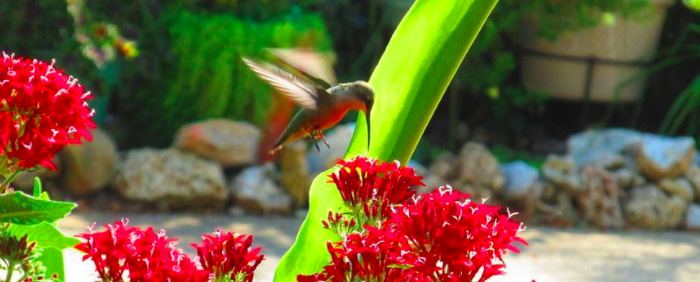
Avoid pesticides
Although pesticides are often specific, that is, they are intended to fight a particular insect, they can still be harmful to other creatures that play a useful role in the garden. If your garden is well maintained, the various creatures in its natural ecosystem will, for the most part, prevent the proliferation of pests. If you absolutely need to use a pesticide, follow the directions exactly, even for products that are accepted organically, which are no less dangerous than chemicals.
Create protected areas
Birds and butterflies need places to rest and procreate, that is, suitable places to nest and perch. The first will settle in the trees or in boxes that you provide them; make sure they are high enough to be protected from marauding predators.
As for butterflies, they lay their eggs on the leaves of specific plants whose caterpillars will feed after hatching. It is therefore important to provide them with the species that they use as food and place of spawning, in sunny places sheltered from strong winds. Also, as they are not warm-blooded animals, they need the sun to warm up and move; put some large flat stones in the garden to allow them to sit there and sunbathe.
Provide water
All living creatures need water, a need that can easily be satisfied by installing a pond, fountain or bird bowl in the garden. On the other hand, the ordinary bird bowl is not suitable for butterflies because it is too deep. Instead, give them a large saucer of the type used for plant pots, and fill it with damp sand. They will have a place to sit and drink without getting soaked.
Provide them with food
With a little planning, you can grow plants that will provide food to your winged friends throughout the season. However, the National Audubon Society also recommends feeding bennel seed throughout the year to provide birds with an additional source of food and to attract species you would not otherwise see in your garden. As for butterflies, many like ripe fruits; by putting a few slices in a feeding station, you will be able to attract new species.
Butterflies feed on both larvae and adults. The plants they choose vary depending on the species, but also the stage. Monarch butterflies, for example, require milkweed as food at the caterpillar stage, but will be associated with many other adult plants. To attract several different species, plant a good variety of flowering plants of various colors.